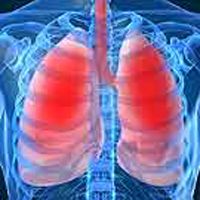Article
Novel Therapy Target for COPD
Author(s):
Chronic obstructive pulmonary disease (COPD) may be able to be treated with a newly validated drug target.

Chronic obstructive pulmonary disease (COPD) may be able to be treated with a newly validated drug target, according to a report published in the European Respiratory Journal.
Researchers from the German Research Center for Environmental Health used lung tissue cultures in order to mimic the 3D lung microenvironment in vivo and determine if the Wnt signaling pathway is a viable drug target for COPD treatment. The researchers explained that Wnt and β catenin signaling is particularly interesting to investigators as a promising target for lung repair. They noted though, that the turnover from novel therapeutic target to model systems in clinical use has remained a challenge.
The Wnt signaling pathway, the authors explained, is one of the several conduits between cells reacting to their external changes. The “Wnt” part of the name comes from the main component Wnt, which is a signaling protein that is an important connector in the development of various animal cells. There are other proteins involved in the conduit, too, such as the β catenin protein.
The researchers used 2 well known glycogen synthase kinase 3β inhibitors: lithium chloride (LiCl) and CHIR 99021 (CT). They were able to determine that Wnt/ β catenin driven lung repair processes in the 3D lung tissue cultures demonstrated preserved lung structure and function for as long as 5 days. The Wnt/ β catenin protein signaling activation and murine and patient derived 3D lung tissue cultures was also demonstrated, the researchers said.
“In our study we showed that activation of the Wnt/ β catenin signaling pathway includes lung tissue repair, depending on the patient’s stage of COPD,” explained researcher Dr. Melanie Konigshoff in a press release. “We hope in this way to develop long term treatments that induce lung tissue repair in the patients.”
In the future, the research team believes their findings can contribute to drug development and mechanistic studies in patient derived lung tissue. Eventually, they hope their discovery will lead to novel pathways to successful clinical translation and precision medicine.
“Previously, studies largely relied on animal models, and cell cultures in the Petri dish were limited to 2 dimensions and individual time points,” researcher and doctoral student Franziska Uhl concluded in the statement. She added that the new method makes it possible to evaluate deceased lung tissue in patients and investigate possible repair mechanisms in 3D with high spatio temporal resolution.
The researchers want to expand the study by increasing the patient cohort to include new treatment approaches for COPD. Additionally, they want to explore other lung diseases such as pulmonary fibrosis and lung cancer.




